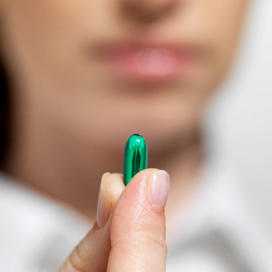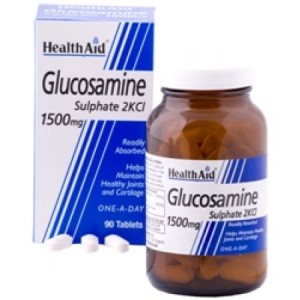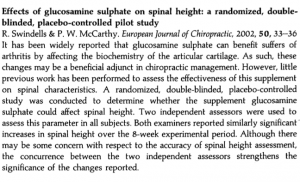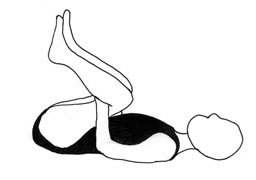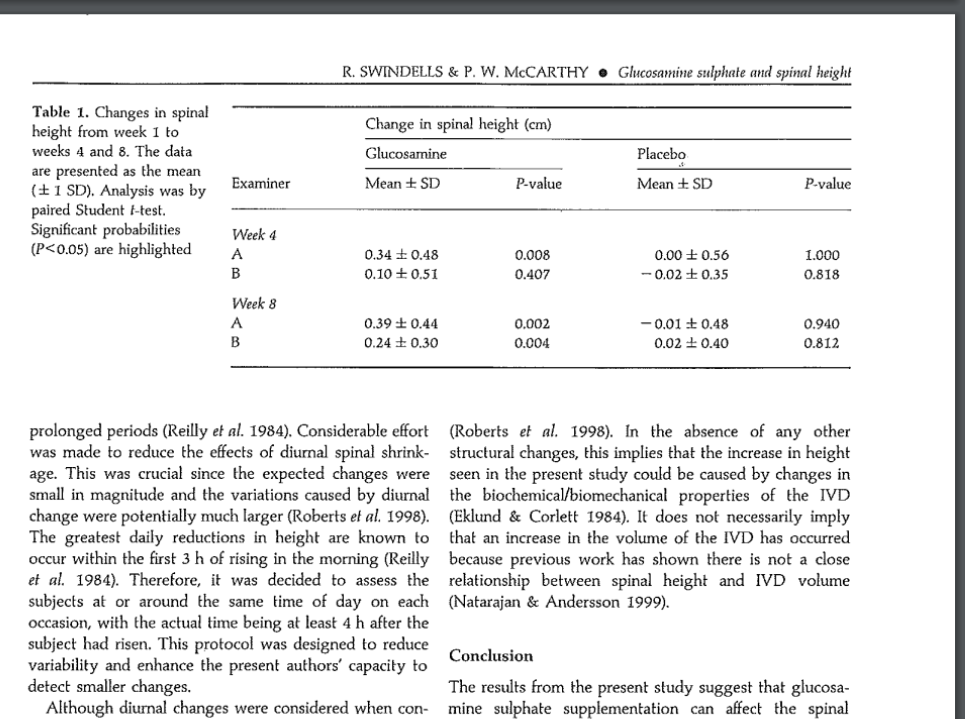This Easy To Find Over-The-Counter Supplement Pill Can Help Children Grow Taller
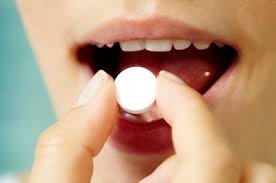 (Update 6/2/2014: I have had to add this disclaimer in the front after I finished talking to a representative who have been selling Collagen Type I and Type III extract based drinks for a beauty products company. I looked deeper into the scientific basis of the company’s claims and after realizing that their claims are unjustified by the science, I wondered whether my claims here was also unjustified based on jumping to conclusions too quickly. I think I did just that. After looking at more of the research on the efficacy of Collagen Type I extract (or based on this post, Calcium L-Threonate which can increase Collagen Type I expression) on chondrocyte proliferation, I do NOT think this pill will help adults with fully closed ossified growth plate increase in height, even minimally. However, I will stand by the claim that there will be some effect on children with intact epiphyseal hyaline cartilage. I was wrong and I made a mistake in the analysis, in jumping to the wrong conclusion. Refer to the study “Relationship between cell shape and type of collagen synthesised as chondrocytes lose their cartilage phenotype in culture“.)
(Update 6/2/2014: I have had to add this disclaimer in the front after I finished talking to a representative who have been selling Collagen Type I and Type III extract based drinks for a beauty products company. I looked deeper into the scientific basis of the company’s claims and after realizing that their claims are unjustified by the science, I wondered whether my claims here was also unjustified based on jumping to conclusions too quickly. I think I did just that. After looking at more of the research on the efficacy of Collagen Type I extract (or based on this post, Calcium L-Threonate which can increase Collagen Type I expression) on chondrocyte proliferation, I do NOT think this pill will help adults with fully closed ossified growth plate increase in height, even minimally. However, I will stand by the claim that there will be some effect on children with intact epiphyseal hyaline cartilage. I was wrong and I made a mistake in the analysis, in jumping to the wrong conclusion. Refer to the study “Relationship between cell shape and type of collagen synthesised as chondrocytes lose their cartilage phenotype in culture“.)
In the last post I had written that there was something I found which came as close to the real solution as it gets. The following post is NOT it, but something else that we should consider adding to the supplement cocktail. It is still a useful supplement to take, and has been shown to help young children avoid diseases that can be caused by low bone mineral density. What I am claiming is a very easy to obtain pill which would have quite noticeable effects with children who still have the ability to continue to grow in height, but it would also have some height increasing benefits inside adults as well. If we combined this easy to get over-the-counter supplement pill with the others that we have already researched and had found to be effective, it would only improve on the effectiveness of the overall pill cocktail. From the notes by other researchers, it seems to be safe to take orally.
I had said before in a previous post about how there is close to nothing left to talk about and nothing else to discover. That is actually true, at least when it comes to all English based sources. However, there are still some resources which have been written in the old Soviet Union in Russian, Chinese, and Germany articles which I have not been able to take a look at yet. This post is the direct result of research done in some lab in China. It is a good indicator that we need to figure out how to find resources written in other languages from other countries which have a good history of scientific research and documenting down their research. I can’t read any of the Russia, German, or Chinese based studies so we would ask that the readers who can to help us out in looking up scientific articles written in other languages.
There is in fact one study Tyler showed me a year ago from a Iranian/Persian group of doctors written in Farsi where a teenage boy managed to get his growth plates reopened or unfused due to a sports injury where the ankle was fractured. We tried for hours to get the Google Translator and Yahoo’s Babel Fish to translate it but neighter of them worked well enough for use to read.
Example: It was only through luck that I managed to track down the actual patent # that proved that the Japanese Ginza Kojima Height Increasing Machine was indeed real and legitimate, based on a real patent. (Click Here to see the pictures of the actual patent.) Their method on increasing a fully grown person’s height using minimally invasive methods is completely original and makes total sense from a physics perspective (Using a combination of centripetal force and IVD decompression). Like all good things though, even that Patent has its limits on what it can give a person in terms of height. But the Japanese based patent was real and was shown to be reasonably effective, as judged by me and Sky more than 6 years ago.
What did I actually find? There is a certain compound which seems to have the effect of increasing the thickness of both articular cartilage and epiphyseal cartilage by increasing the expression of Collagen Type I.
The source is from a patent I discovered in the Google Patent Database entitled “Calcium l-threonate for preventing or treating cartilage related diseases (Patent # EP 1458372 A1)“. These patents are often filed to various international organizations to not just cover the intellectual rights of the use of the patent in one country but in many countries. The other Patent # is WO 2003004012 A1
So what is this compound? Calcium L-Threonate
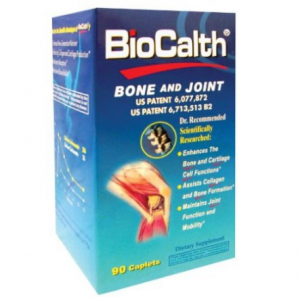 For this patent, I did do a rather extensive analysis on it to see whether what they are claiming was accurate. Was I just reading too much into this patent and looking for validation on what I hoped was in it? Probably, but sometimes we have to make connections that are very weak. I believe that there is a positive correlation and a causal effect, but it is very weak.
For this patent, I did do a rather extensive analysis on it to see whether what they are claiming was accurate. Was I just reading too much into this patent and looking for validation on what I hoped was in it? Probably, but sometimes we have to make connections that are very weak. I believe that there is a positive correlation and a causal effect, but it is very weak.
You can get the L-Threonate from Here.
Chemical Properties:
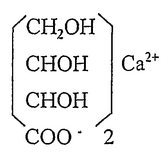 Comes in white powder form, has no odor, is soluble in water but not in alcohol based liquids. Written as C8H14O10Ca.
Comes in white powder form, has no odor, is soluble in water but not in alcohol based liquids. Written as C8H14O10Ca.
From the Patent, they say that the compound can be made from first combining L-Ascorbic Acid with Water, and then adding Calcium Carbonate into the mixture. Hydrogen Peroxide was added to start the Acid-Base reaction, at a set temperature up to a certain time. Push the product from the chemical reaction through packed active charcoal to filter and do a chemical separations process
Is the compound safe?
It seems that the L-Threonate compared to other NSAIDs (Non-Steroidal Anti-Inflammatory Drugs) like Ibuprofen used to treat cartilage inflammation has less side effects. So it is safer than commonly prescribed prescription drugs. This might explain why the FDA allowed the compound to be allowed to be OTC or Over-The-Counter.
Dosage Requirements:
- For an adult is typically between 0.5 g and 12 g per day, preferably between 3 g and 7 g per day. (Note: After doing some calculations, we found that for a person who weighs 150 lbs, they would need about 7 grams per day)
- For children, the dosage may be decreased according to their weights
So What Is The Scientific Basis For Its Effectiveness?
The patent states that the Calcium L-threonate would have effects on collagen type I mRNA expression as well as a host of effects which I will just quote from below. (It has effects on articular cartilage, epipihyseal cartilage, chondrocyte hypertrophy, cartilage matrix generation, proteoglycan synthesis)
From the abstract…
“….It had been demonstrated by experiments that calcium L-threonate could improve significantly the positive expression percentage of collagen I mRNA in the chondrocyte and osteoblast, improved significantly the positive expression percentage of articular cartilage and epiphyseal cartilage, facilitated the growth of chondrocyte, increased the quantity of bone collagen, promoted the formation of bone and cartilage matrix and the synthesis of proteoglycan…”
Important: Now, we fully realize that the actual type of collagen found in hyaline cartilage and the epiphyseal cartilage is collagen type II. This compound would only increase Type I expression. Type I is actually the really, REALLY common type which is found in the human body. It is the same type as what women pay plastic surgeons to inject into their lips.
In the experiment the researchers took a total of 66 young lab rats and injected them with retinoic acid, which is a very well known compound which causes bone density loss and cartilage proteoglycan degeneration. 8 of those rats were use in a control group while the other 58 rats were put into 9 groups. Of the 9 groups, the chemical compound of normal saline, Caltrate-D, Calcium Citrate, Sodium hydroxyethyl phosphate, Calcium Citrate at 50 mg/kg of body weight, Calcium Citrate at 100 mg/kg of body weight, and 200 mg/kg of body weight.
The drugs were given to all groups except control for 10 weeks and fed a low Ca diet. After 10 weeks, the lower part of the right femur of each rat was extracted and analyzed.
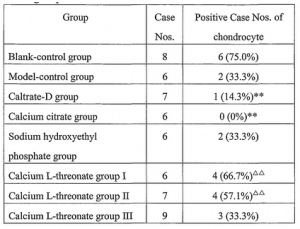 To see the changes, there were immunohistological chemical assaying done using a chemical staining kit. If there was an increase in Collagen Type I expression, the bone and cartilage area would turn into a color of brown-yellow. The results can be seen in the Collagen Type I mRNA Expression of all 8 (wasn’t there supposed to be 9 groups??) sets. This is for the data from the immunohistochemical staining.
To see the changes, there were immunohistological chemical assaying done using a chemical staining kit. If there was an increase in Collagen Type I expression, the bone and cartilage area would turn into a color of brown-yellow. The results can be seen in the Collagen Type I mRNA Expression of all 8 (wasn’t there supposed to be 9 groups??) sets. This is for the data from the immunohistochemical staining.
We note the difference between the Caltrate-D group and the Calcium L-Threonate group. Caltrate-D is just a brand name for a type of calcium supplement with very high levels of Vitamin D. When the rats were given caltrate-d, the chondrocytes actually started to ossify. Compare this to the Calcium L-Threonate,
For the group who got the Sodium hydroxyethyl phosphate, the chondrocytes did proliferate, but the chondrocytes seemed to be disorganized and started to clump together into osteoid groups (Bad sign).
It seems that for the 3 groups getting the Calcium L-Threonate, the effect “was helpful to the growth and development of epiphyseal cartilage and improved the process of autoskeleton in epiphyseal cartilage“
Is the height gains permanent?
Unlike so many other techniques that have come out, the gains would be permanent, at least until the adult grow old and reaches their 50-60s and start to shrink again due to decreased collagen and proteoglycan levels in the IVDs. This is as permanent as it gets.
Why would the gains be permanent?
That is due to the fact that Calcium L-Threonate has more than just an effect on bones, or cartilage specifically, but both of them at the same time. The effect on bone is most pronounced. It increased the micro-circulation within the bones and reversed bone mineral density loss. This patent stated explicitly that
So what do you guys need to take away?
What the patent is actually doing is to claim an alternative, rather simple approach on making the Calcium L-Threonate. You’d need Ascorbic Acid, Hydrogen peroxide, Calcium Carbonate and water. as well as a heater of some kind. Of course, who would want to do that and put a chemical lab in their room?
The Chinese researchers tested 9 groups of lab rats and let them eat the chemicals. The leg bone of the rat was cut out after 10 weeks and tested to see how the difference in collagen expression and bone tissue accumulation and changes. The group with the L-Threonate had the biggest changes.
The patent states clearly that the supplement will be useful in treating and preventing cartilage-related diseases. Using a dosage of around 50-200 mg per kg of body weight would mean that the average 150 lb human would need about 7 grams of the compound for each dosage.
This compound would increase the level of Collagen Type I in the body in both children and adults. For children, it would have very noticeable effects, if one could ever do a real controlled type of scientific height increase test using identical twins. However, I don’t believe that type of experiment has ever been done.
For adults, the effect will be minimal, but for a certain minority of the adult population, it would actually let them increase in height, by upwards of a few millimeters. But you would want to combine it with other supplements we have already mentioned before. It will work best in a group.
Here is a link to Amazon where you can buy it if you want
 Price: Currently $25 on Amazon with Free Shipping if your order is over $35.
Price: Currently $25 on Amazon with Free Shipping if your order is over $35.
(Yes, it is an affiliate link. We get about $1 for every purchase the person makes through it.)
Note: The picture to the right is for the supplement sold by the reseller company BioCalth. On the product box right on the front, they actually directly reference two patent #s. They are….
- Patent # 6077872 – This patent showed that Calcium L-Threonate can treat rickets in young kids. – Link Here
- Patent # 6713513 B2 – This patent is the one we just talked about. – Link Here
It seems that the people from BioCalth specifically created and sold this supplement because they became aware of this China-based patent and saw a small market for people who wanted it.

